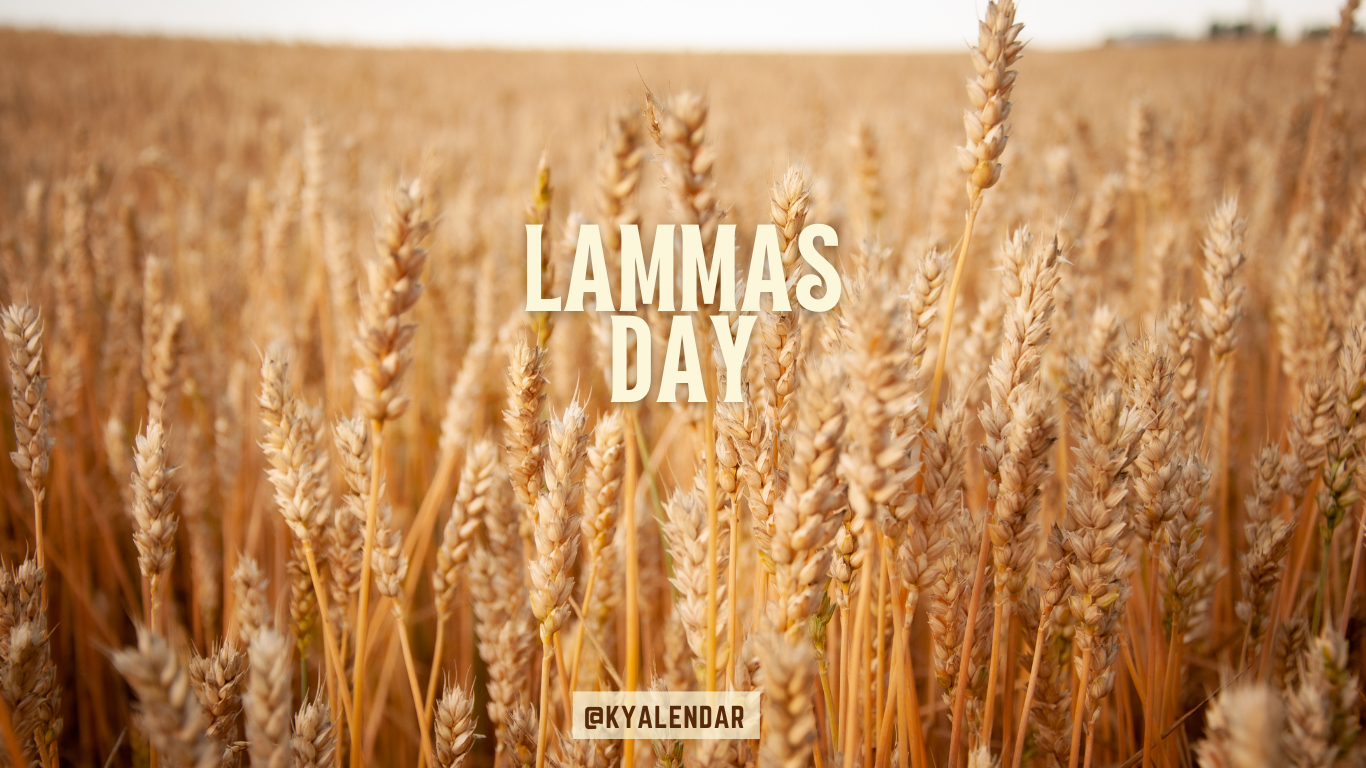
- This event has passed.
Lammas Day
August 1

Lammas Day, also known as Loaf Mass Day, is traditionally celebrated on August 1st in some English-speaking countries. It marks the beginning of the harvest season, particularly for wheat and other grains, and has its roots in both pagan and Christian traditions. Here’s a detailed look at Lammas Day:
Historical Background
- Pagan Roots: Lammas Day, or Lughnasadh, has its origins in ancient Celtic traditions. Lughnasadh was a festival dedicated to the god Lugh, a deity associated with the sun, light, and harvest. The festival celebrated the first fruits of the harvest, especially grains.
- Christian Adaptation: With the spread of Christianity, Lammas Day was incorporated into the Christian calendar. The name “Lammas” comes from the Old English “hlaf-mas,” meaning “loaf mass.” It was a day when the first loaf of bread made from the new harvest was blessed in church.
Significance
- Beginning of the Harvest Season: Lammas Day signifies the start of the harvest, a crucial time in agrarian societies. It was a time to give thanks for the bounty of the earth and pray for a successful harvest.
- Transition of Seasons: The festival also marks the transition from summer to autumn, a time of change and preparation for the colder months ahead.
Celebrations and Traditions
- Blessing of the Bread: One of the central traditions of Lammas Day is the baking of bread from the first grains of the harvest. These loaves are often taken to church to be blessed. This ritual symbolizes gratitude for the harvest and a prayer for continued abundance.
- Harvest Festivals: Communities often hold harvest festivals, which include feasting, music, dancing, and games. These festivals celebrate the hard work of farmers and the gifts of the earth.
- Fairs and Markets: Lammas fairs and markets are traditional gatherings where people buy and sell goods, particularly agricultural produce. These events foster community spirit and support local economies.
- Crafts and Decorations: Making corn dollies and other crafts from the harvested grains is a common tradition. These crafts are often used as decorations in homes and churches.
- Bonfires and Feasting: In some regions, bonfires are lit to celebrate the harvest. Feasting on seasonal produce, particularly bread and other baked goods, is a central part of the celebrations.
Modern Observances
- Neopagan Practices: In contemporary times, Lammas Day is also observed by Neopagan communities, particularly those following Wicca and other modern pagan traditions. These celebrations often include rituals, offerings, and gatherings to honor the harvest and the changing seasons.
- Local Traditions: Different regions have unique ways of celebrating Lammas Day, often incorporating local customs and agricultural practices.
Cultural Impact
- Literature and Folklore: Lammas Day has been referenced in various works of literature and folklore, reflecting its importance in cultural history. Shakespeare, for instance, mentions Lammas-tide in “Romeo and Juliet.”
- Agricultural Significance: The day highlights the importance of agriculture in human societies and the close relationship between humans and the natural world.
Symbolism
- Grain and Bread: Grain and bread are powerful symbols of life, sustenance, and community. They represent the fruits of labor and the blessings of the earth.
- Harvest and Abundance: Lammas Day celebrates abundance and the cyclical nature of life. It is a time to reflect on the blessings received and to prepare for the future.
Lammas Day, with its rich blend of pagan and Christian traditions, serves as a reminder of the importance of the harvest and the deep connection between humans and the earth. It is a time of thanksgiving, community, and celebration of the bounty that sustains life.